Keir Leslie – 10 May, 2014
If we attempt to analyse works of art from a broadly phenomenological perspective, that is to say through an effort to construct accounts of them as experienced phenomena, then we begin to work within a paradigm closely aligned with aspects of applied psychology. This strain of empiricist analysis comes and goes within contemporary criticism, but often clusters around the predominantly formal and non-referential structures of post-minimal sculpture.
A black baseball cap studded and festooned with gold chain hangs on a black metal structure, an adapted desk frame. The chain is artfully draped, swags bunching around the steel bars. On the floor, more gold chain delineates a staring eye, while a pyramid of glass and receptionist’s bells reminiscent of a cake stand sits on a chair. Off to the side, a large white structure displays video work:, one projection, one on a monitor. The monitor again uses a motif of eyes, this time ones that move and twitch.
In this way, Old Brain Prospect, James Oram’s latest exhibition at Dog Park Art Project Space, maintains a formal vocabulary of hard surfaces and cool textures. For a show at Dog Park, normally comparatively sparse, the gallery feels full, and Oram’s work seems surprisingly bulky, particularly the large structure that operates as a support for the video work. This structure, made from thinly white-painted MDF, is about the size of an office desk, with rising partitions that suggest cubicles or booths. Because of the partitioning and shelving devices it uses, the viewer must traverse the space around the structure to view the videos, and the relationship between the viewer and video is constrained and defined in a certain way.
Sophie Davis’ accompanying text provides a field of context for these objects. This field is the range of practices that run from those of neuroscience or psychology more broadly, through to the less rigorous, more market-driven operations of neuro-marketing and pop-psychology. In particular, the cap can now be read as an EEG device, a mechanism for measuring electrical activity in the brain, while the bells mounted on the chair take on a Pavlovian dimension, and the eyes associate themselves with attempts to understand reading and looking by the detailed tracking of eyeball movements.
If we attempt to analyse works of art from a broadly phenomenological perspective, that is to say through an effort to construct accounts of them as experienced phenomena, then we begin to work within a paradigm closely aligned with aspects of applied psychology. This strain of empiricist analysis comes and goes within contemporary criticism, but often clusters around the predominantly formal and non-referential structures of post-minimal sculpture.
Within that paradigm, the eye, and the eye’s position with reference to the work, becomes the central term. In his treatment of Richard Serra’s large scale commission for the Duveen Galleries at the Tate, David Sylvester emphasises the absolute importance of miniscule differences in height. The minute relative shift between above and below eye level becomes fundamentally important to how we perceive the work. Similarly, the process of walking, of movement, becomes important, not just in itself, but also as a way of gaining a new vantage point, a new vista. For somebody like Yves-Alain Bois, for example, this means that Serra’s work becomes almost picturesque, almost garden-like, in its insistence on the viewer’s placement and movement in space.
Oram’s work, as Davis’ text suggest, is coming into this discussion from the point of view of a certain form of contemporary neuroscience, one that is attempting to construct accounts of the subject’s cognitive and physical processes when confronted with certain things. Within this paradigm, the distinction between the physical and the cognitive begins to dissolve, and the boundaries of the mind and body blur and meld. The tools of this paradigm are the EEG cap, the eye tracker, and the fMRI, - Oram represents those tools to us in the show. The overlaps between this paradigm and that of phenomenological criticism place any critic trained in - and tending towards - such a methodology in a self-reflexive position. To discuss the minute shifts of attention and posture, to practice the introspective self-analysis that phenomenology often demands, is a similar process of attempting to deconstruct the cognitive process that the neuroscientist, or perhaps the marketing executive, is engaged with.
Keir Leslie
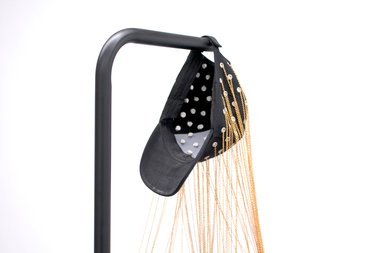
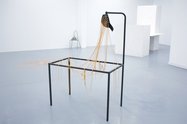
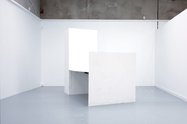
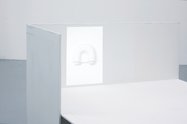
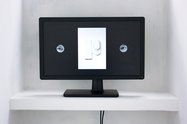
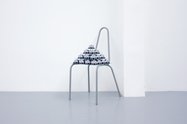
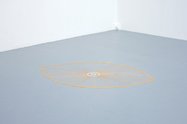
 Advertising in this column
Advertising in this column Two Rooms presents a program of residencies and projects
Two Rooms presents a program of residencies and projects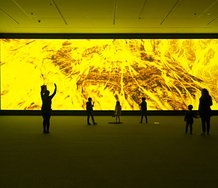
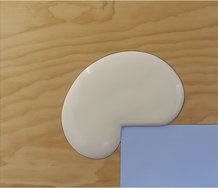

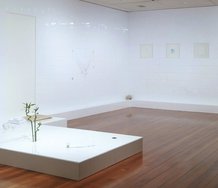
This Discussion has 0 comments.
Comment
Participate
Register to Participate.
Sign in
Sign in to an existing account.